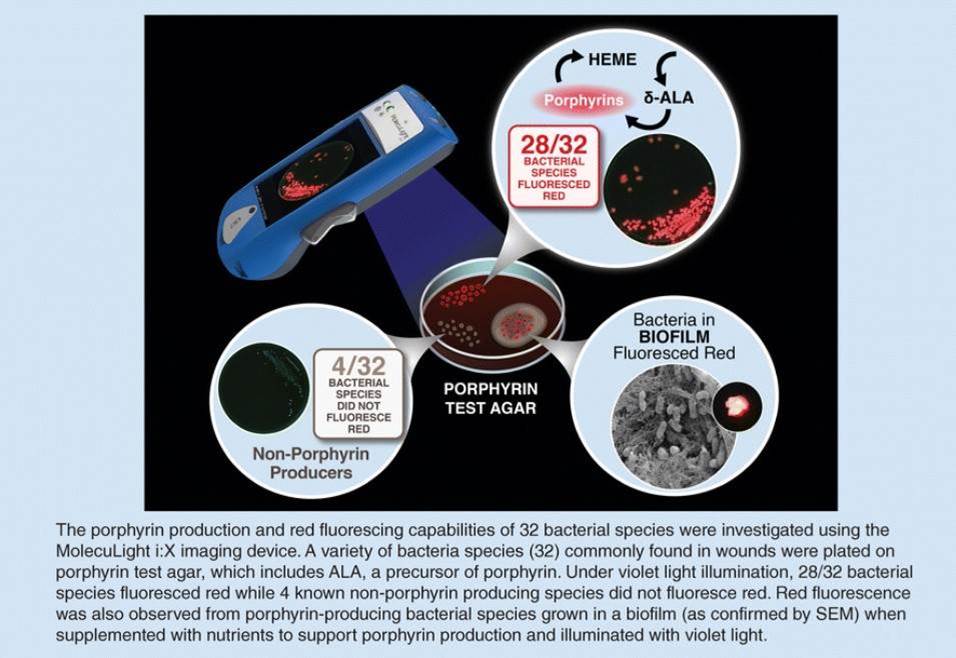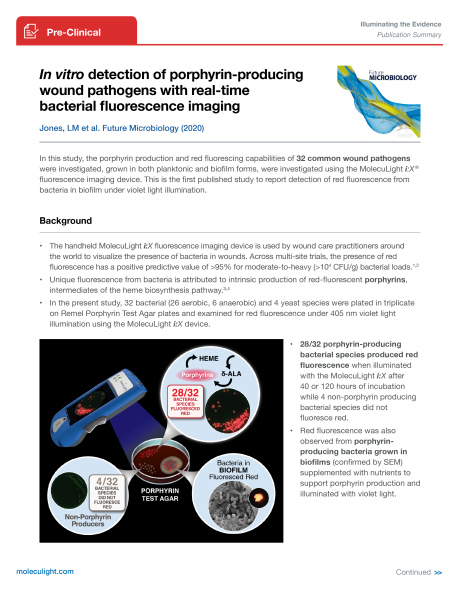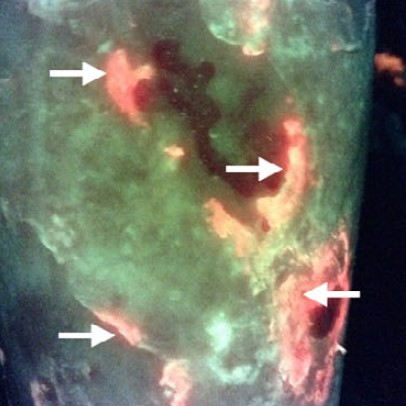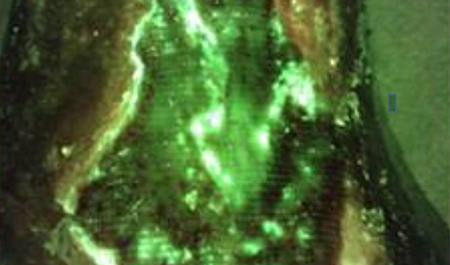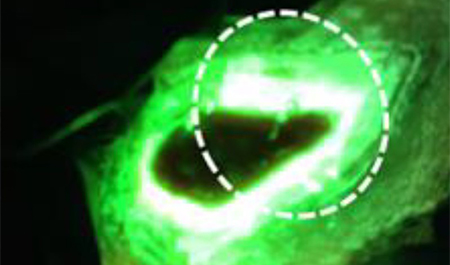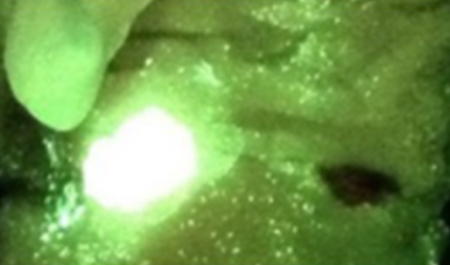Aim: Fluorescence imaging (MolecuLight i:X® real-time fluorescence imaging device) can visualize polymicrobial populations in chronic and acute wounds based on porphyrin fluorescence. We investigated the fluorescent properties of specific wound pathogens and the fluorescence detected from bacteria in biofilm.
Methods: Utilizing Remel Porphyrin Test Agar, 32 bacterial and four yeast species were examined for red fluorescence under 405 nm violet light illumination. Polymicrobial biofilms, supplemented with δ-aminolevulinic acid, were investigated similarly.
Results: A total of 28/32 bacteria, 1/4 yeast species and polymicrobial biofilms produced red fluorescence, in agreement with their known porphyrin production abilities.
Conclusion: These results identify common wound pathogens capable of producing porphyrin-specific fluorescence and support clinical observations using fluorescence imaging (with the MolecuLight i:X) to detect pathogenic bacteria in chronic wounds.
